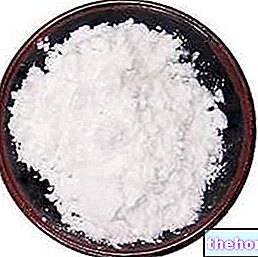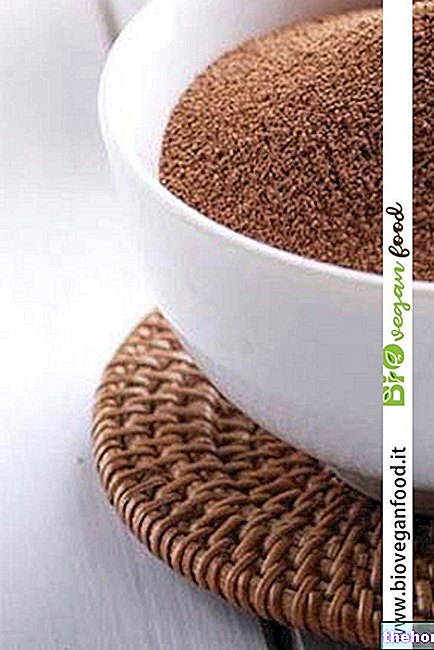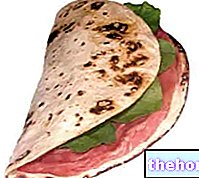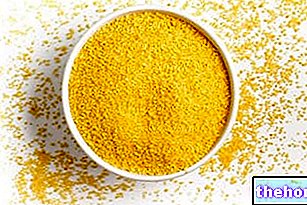What is the Wheat Germ
Wheat karyoxide and wheat germ
The wheat kernel consists of:
- l "embryo or wheat germ (2-4% by weight)
- integuments or casings (about 8%)
- amylaceous endosperm or floury almond (about 87-89%)
Each of these regions contains different types and percentages of nutrients, in relation to the biological role it plays. The embryo or wheat germ is, for example, particularly rich in nutrients, which are essential for promoting germination and supporting the first stages of growth.

Anatomical region of the caryopsis
Percentage of the kernels
Starch and other carbohydrates (%)
Protein (%)
Lipids
(%)
Cellulose
Hemicellulose
Pentosans
(%)
Mineral substances
(%)
Integuments
9
14
12.8
2.4
65.2
5.6
Aleuronic layer
8
12
32.0
8.0
38.0
10.0
Germ
3
20
38.0
15.0
22.0
5.0
Endosperm
80
83.0
11.0
30.0
2.0
1.0
Table taken from - Food chemistry - Paolo Cabras; Aldo hammers
Nutritional properties
Wheat germ is a veritable concentrate of nutrients such as amino acids, fatty acids, mineral salts, B vitamins and tocopherols (vitamin E). Unfortunately, this embryo is eliminated together with the external envelopes during the refining process, depriving the wheat flour of much of its precious load of fibers, vitamins and mineral salts. This operation is necessary for organoleptic reasons, but also to increase storage times, since the fatty acids contained in the germ quickly turn rancid.
In whole grains, on the other hand, all three parts of the grain are present and for this reason their health properties are now universally accepted.
Wheat germ can be extracted quite easily by separating it from the flour with a sieve after grinding the kernels. If extracted in this way it comes in the form of small whitish flakes, which can be consumed plain or together with other foods (yogurt, breakfast cereals, vegetables) at a rate of about 50 g per day.
Sprouted wheat germ
Wheat germ is often obtained from sprouted kernels, as its nutritional properties are enhanced during the germination process. By putting the grain in contact with water, the embryo becomes the site of an intense enzymatic activity, which significantly increases its precious nutrient reservoir. The calcium level passes in a few days from 45 to 71 mg per 100 g, that of the phosphorus from 423 to 1050 mg and that of magnesium from 133 to 342 mg. Germination also significantly increases the amino acid and vitamin content; B1 increases by 20%, B5 by 45%, B6 by 200%, carotenoids 225%, 300% vitamin E and 500% vitamin C.
Homemade production
Wheat sprouts are therefore a better source of nutrients than dried wheat germ. They can be easily produced at home, using organic seeds and soaking them in warm water for 12 hours. Subsequently they will be placed in a deep dish, covered with a damp gauze that protects them from direct light and drying. Leaving them at a temperature of 20 ° C and taking care to wet them slightly twice a day, the wheat sprouts can be eaten. after three or four days For an adult the recommended dose is that obtained from a tablespoon of dried seeds.
Wheat germ oil
By pressing the wheat germ, the homonymous oil is obtained, which is the best food source of vitamin E (133 mg / 100 g against 18.5 mg / 100g of olive oil). This vitamin is a very powerful antioxidant agent, essential in the fight against free radicals, in the defense of health and in the prevention of aging.
Wheat germ oil is also very rich in essential fatty acids, which are also precious allies of our health, as long as the food is consumed raw (not recommended for fried and sautéed). If taken as a supplement, the "Wheat germ oil should be taken at the end of the meal (the fats present in food favor the absorption of vitamin E), following the manufacturer's instructions.
Consumed regularly, replacing a part of refined foods with whole grains or using specific supplements, wheat germ allows us to fill the numerous deficiencies of the Western diet, which is high in calories on the one hand but poor in nutritional principles essential for our well-being on the other.
Octacosanol
The wheat germ also contains a substance called octacosanol, which, according to the research of the American physiologist Thomas Cureton, would improve athletic performance and the functionality of the pituitary, optimizing physical and mental efficiency (the pituitary is a gland that, by producing different hormones, regulates the functionality of numerous organs and systems, such as reproductive, musculoskeletal, endocrine and nervous systems.) Preliminary evidence suggests potential benefits also for patients with high blood cholesterol levels and for those affected by Parkinson's disease.
Wheat germ, in whatever formulation it is taken, is therefore an excellent supplement even for sportsmen and professional athletes.
See also: Wheat germ oil unsaponifiables
Other Foods - Oils and Fats Peanut Butter Cocoa Butter Butter Greaves Wheat Germ Animal Fats Margarine Vegetable Cream Tropical Oils and Fats Frying Oils Vegetable Oils Peanut Oil Borage Oil Rapeseed Oil Krill Oil Poppy Seed Oil Seed Oil Pumpkin Avocado oil Hemp oil Safflower oil Coconut oil Cod liver oil Wheat germ oil Linseed oil Macadamia oil Corn oil Almond oil Hazelnut oil Walnut oil Olive oil Palm oil fish Rapeseed oil Rice oil Pomace oil Seed oil Soybean oil Grapeseed oil Extra virgin olive oil Sesame seeds and sesame oil Lard OTHER ARTICLES OILS AND FATS Categories Food Alcoholics Meat Cereals and derivatives Sweeteners Sweets Offal Fruit Dried fruit Milk and Derivatives Legumes Oils and Fats Fish and fishery products Salami Spices Vegetables Health recipes Appetizers Bread, Pizza and Brioche First courses Seconds pi acts Vegetables and Salads Sweets and Desserts Ice creams and sorbets Syrups, liqueurs and grappa Basic Preparations ---- In the Kitchen with leftovers Carnival recipes Christmas recipes Light diet recipes for Celiacs Recipes for Diabetics Recipes for Holidays Recipes for Valentine's Day Recipes for Vegetarians Protein Recipes Regional Recipes Vegan Recipes



























